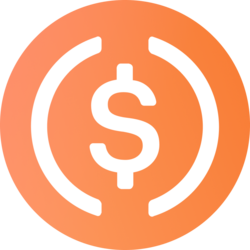(These are the market notes on today’s action by Mike Santoli, CNBC’s Senior Markets Commentator. See today’s video update from Mike above.) A bit of high-altitude turbulence strikes, which probably feels worse than it is to many traders because the ascent has been so smooth for so long. At the headline-index level, a modest blip, the S & P 500 down half a percent at the worst, though in part the slide is being buffered by uncharacteristic strength in some defensive groups. The makings for some type of shakeout have been accumulating, noted here in recent days: Unusually low correlations among stocks and sectors, uncommonly extreme single-stock volatility relative to calm index action, remarkably heavy call-option volumes and some fundamentally flimsy speculative groups ( quantum computing , drones, crypto-linked and heavily shorted names) going vertical. No saying whether today’s wobble is the start of anything of note. The tape has successfully rotated its way out of danger for the past two months. Today is exactly six months since the intraday low of the Tariff Panic mini-crash, and along the way to its 39% ramp from that 4835 bottom tick the S & P 500 hasn’t had even a 3% pullback since late April. Such a modest 3%-ish retreat, should one develop, would reset the index with a return to a former breakout level from early September and the 50-day moving average. The tenacious AI trade hit a bump Tuesday, with semiconductors off 2% despite AMD following Monday’s surge with another 3% uptick. A report by The Information purporting to show Oracle ‘s data-center-hosting business running at slim margins was a neat excuse for a test of aggressive positioning and persistent chatter about whether the head-snapping OpenAI capex commitments were transitioning the setup from figuratively “Too good to be true” to literally so. Oracle shares, down more than 5% in the initial reflex, narrowed the losses by day’s end but remained under pressure. Crises of faith are part of the pilgrim’s journey, and it will remain difficult to stand in the way of the sheer force of the hundreds of billions in buildout plans. Still, the latest rethink has struck while the semi sector is about as overbought as it ever gets, with yesterday’s massive OpenAI-AMD link-up unable to lift the entire complex while Nvidia eases back to its former highs from August around $185. Some skimming of the froth would not be unhealthy, though the question is whether the market got wound tightly enough that a hiccup in the high-momentum groups convulses the rest of the market too. Notable weakness in consumer cyclicals has taken hold, with housing-related and travel stocks undermining the happy view that the Fed was cutting rates into a sturdy consumer backdrop. Some of the alternative data sources have hinted at a soft employment backdrop in September in the absence of official government data. Meantime, GDP tracking models still show a 2%+ annual growth rate this quarter, supported by corporate spending, high-end consumption and still-generous fiscal deficits. Technician Jonathan Krinsky of BTIG flagged the breakdown in the equal-weighted consumer-discretionary sector relative to the S & P 500 as a possible hazard for risk-on positions, shown here. Market breadth was negative but not a washout, new 52-week highs were still well ahead of new lows. The VIX was up a point to the mid-17s, continuing a mild clenching-up underway for much of the past few weeks. Treasuries were bid, the 10-year yield down four basis points to 4.12%. Gold , which has accelerated steeply in the past month, was off earlier highs above $4,101 an ounce but is so far holding the $4,000 level. It’s hard to escape the feeling that gold has become a bit over-loved in the near term, big-name investors ratcheting up their recommended allocations and retail investors piling into the ETFs. The macro rationale might be sound (fiscal imbalances globally, diversification out of the dollar, use as a bond alternative). But it’s a bit odd when an asset meant to be a worst-case haven or universal diversifier or hedge against the unknown has been ripping step-for-step with high-momentum risk vehicles.












































